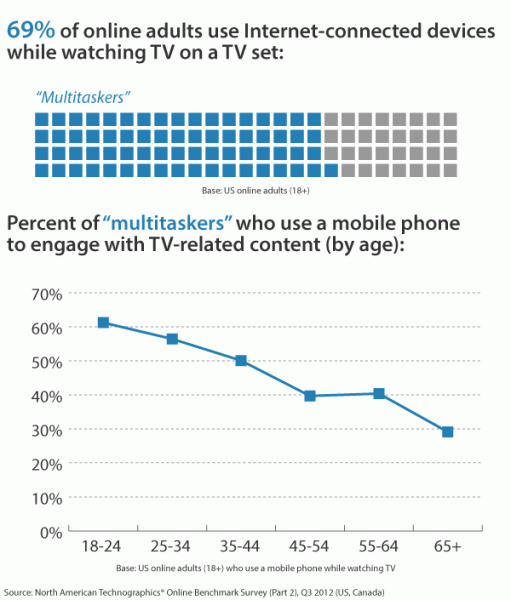The Data Digest: Using Internet-connected Devices While Watching TV
On Sunday, February 24, TVs around the world were tuned to the 85th annual Academy Awards show (aka The Oscars). While the very first Academy Awards ceremony took place in 1929 — with guest tickets costing only $5 and fewer than 300 people attending the event in the Hollywood Roosevelt Hotel’s dining room — today the event is broadcast live to millions of fans across 200 countries. But The Oscars’ impressive growth in viewership is not the only thing that signifies the changing times; the technological advances that the awards program has embraced position the event as a leader in the modern-day media consumption landscape.
In 2011, Oscar.com’s supplementary footage offered an overwhelmingly popular second-screen viewing experience; it won an Emmy Award for Outstanding Creative Achievement in Interactive Media. Several weeks ago, the Academy launched a second version of the official Oscars app that engages consumers all year round but provides exclusive real-time updates during the dazzling event itself.
The Academy’s mobile development, which allows consumers to connect with supplemental real-time content for an enhanced entertainment experience, is a timely one: Forrester’s North American Technographics® Online Benchmark Survey (Part 2), Q3 2012 (US) shows that 69% of US online adults use Internet-connected devices while watching TV today. Not surprisingly, younger consumers are most likely to turn their devices into TV companions: 61% of 18- to 24-year-old multitaskers use a mobile phone to interact with programming-specific content.

As the Academy Awards have demonstrated, the fragmented and simultaneous media consumption experience presents a new way for companies to connect with audiences — and this is something competitive marketers are striving to embrace. My colleague Tracey Stokes asserts in her recent report that, particularly for young viewers, there are “no boundaries between the real and virtual worlds . . . [Companies should] create impact by merging real-world events with virtual interactions [and] create an experience consumers can participate in and share with their friends online or through mobile apps.”